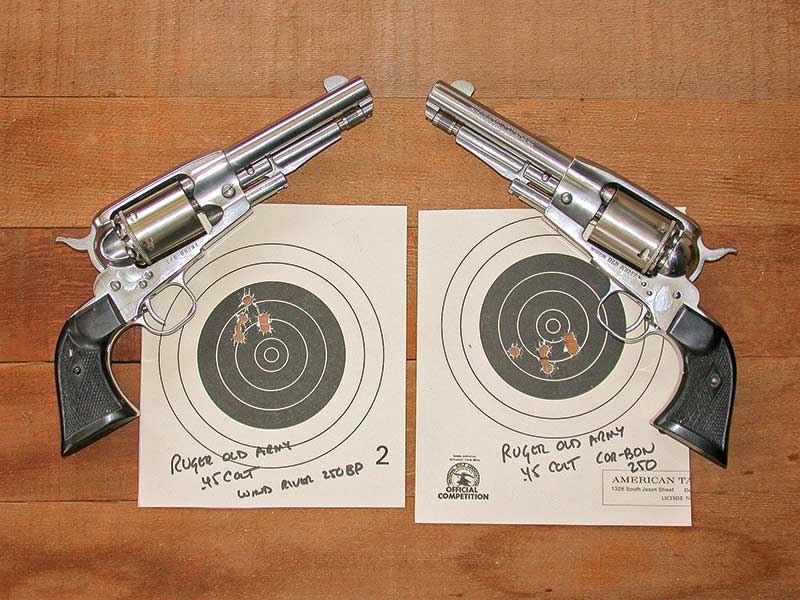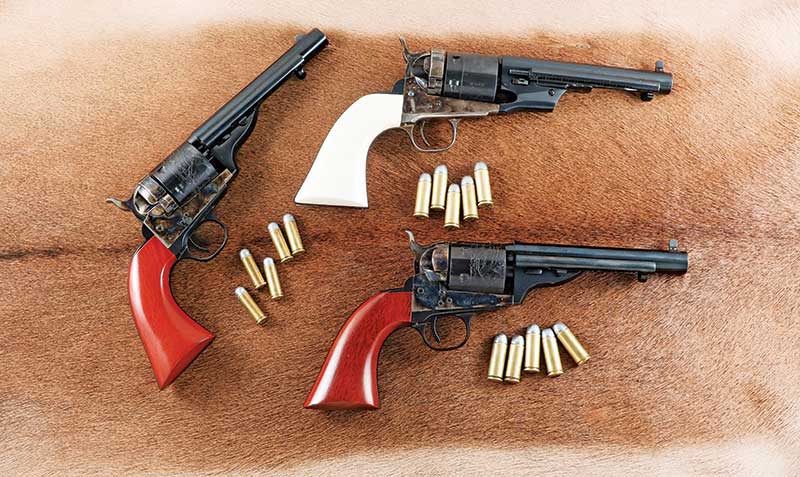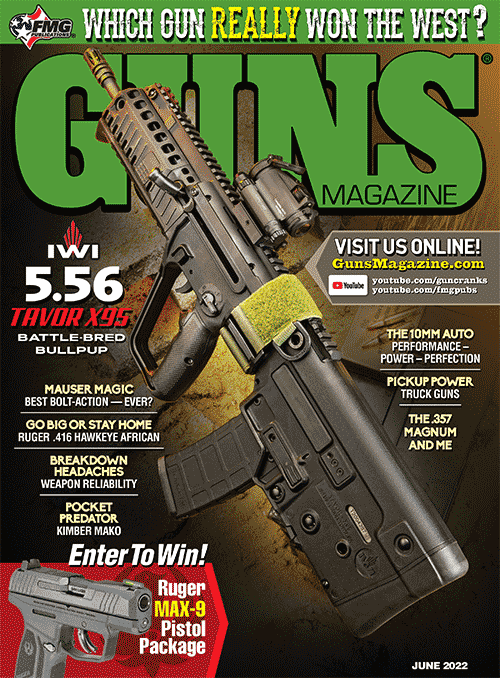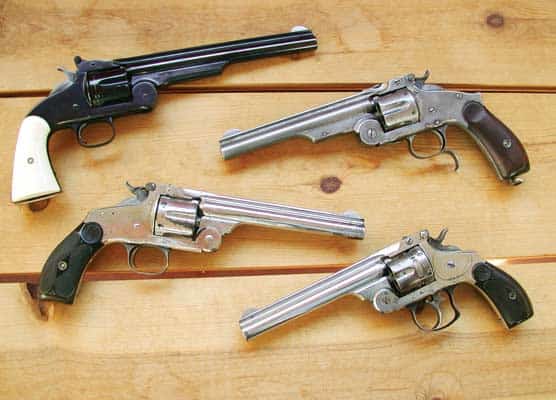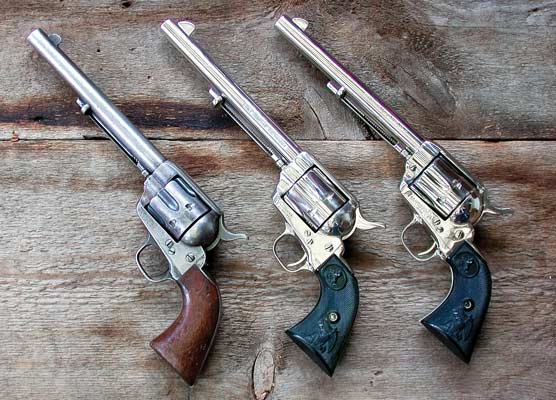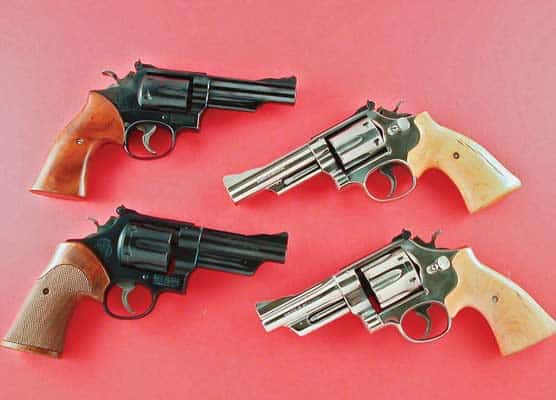Compromise Part 2:
Cartridge Conversions
The Bridge Between Two Epochs
Sam Colt was a genius, however, just as those of us who are not, he also had flaws in his character. In 1836 he came up with the first successful repeating firearms producing the Paterson rifle and revolver form. These five-shot revolvers and shoulder arms were not very powerful but they were a tremendous improvement over the single-shot arms of the day. But something went wrong and Sam Colt went bankrupt.
Fast forward a decade. Texans especially needed arms against the Mexicans. Two men whose name begins with “W” were about to enter his life and have a tremendous effect on his future. That first man was Col. Sam Walker who went back to the Northeast looking for Sam Colt and arms. Colt had neither arms nor a factory, however, the two Sams put their heads together and designed what was to be known as the 1847 Walker. This huge sixgun weighed right around 4-1/2 lbs. with a 9″ barrel; so heavy it wound up being carried in pairs on a pommel holster that fitted over the saddle horn. It used a .44 caliber round ball over a powerful payload consisting of 50–60 grains of black powder. It was as different from the Paterson as a statesman is from a politician.
Ginning Up Guns
They had the design but no factory. Enter the second “W” in the person of Eli Whitney Jr. who did have a factory. Colt contracted with Whitney to build the Walkers. Whitney not only built these revolvers, he also introduced interchangeable parts making repair quite easy. Colt soon had his own factory and the Walker was followed by the 1st, 2nd and 3rd Model Dragoons, 1851 Navy, 1860 Army and his last full-sized Colt percussion revolver, the 1861 Navy. Meanwhile, something else was going on at Smith & Wesson. In 1857, they brought forth the first successful cartridge-firing revolver that was a seven-shot, tip-up design chambered in what we now know as the .22 Short. Rollin White held the patent for bored-through cylinders and he now worked for Smith & Wesson.
Colt had made a huge mistake! He felt shooters would always prefer to “load their own,” that is, pour powder in the cylinder, seat the ball over the charge and then place a percussion cap over the nipple on the back of the cylinder. This was very short-sighted on his part. He had the first crack at the White Patent and turned it down. The Smith & Wesson, as one might imagine, was vastly underpowered but it was a start. The Civil War interrupted S&W’s plans to bring out a larger version, however, another something else was going on at the New Haven Arms Co., which was owned by a shirt maker by the name of Oliver Winchester. His factory foreman came up with the first really successful repeating lever action rifle known as the 1860 Henry, as Winchester was not yet ready to put his name on a firearm.
The 1860 Henry was chambered in a .44 Rimfire cartridge with a case length of about 0.815″; the .44 Special that followed nearly 50 years later had a case length of about 1.200″. So, the arrival of this first successful repeating rifle cartridge also set the stage for a big-bore cartridge sixgun. When Smith & Wesson brought out the first successful big-bore cartridge sixgun in late 1869 it was chambered in the .44 S&W American as well as the .44 Henry Rimfire. Since S&W held the patent for bored-through cylinders, Colt was out in the cold. Remington paid Smith & Wesson $0.25 per revolver to use the White patent to produce cartridge firing revolvers. However, Colt would not do so. They simply waited for the patent to run out.
The question which naturally arises, at least in my mind, is if any local gunsmiths after the arrival of the .44 Rimfire cartridge actually converted percussion revolvers to shoot this new round. To try to get around the patent, Colt came up with the Thuer Conversion using a cartridge which loaded from the front of the cylinder. It was not very popular nor very successful. However, the White patent was about to run out and C.B. Richards of Colt had his own patent issued in 1871. The stage was now set for Colt Cartridge Conversions — cap-and-ball models converted to metallic cartridges.
Conversion
Using the 1860 Army Model as a base gun, Colt began offering Cartridge Conversions with the first Richards Conversion arriving in July 1871 and this first cartridge-firing Colt was soon followed by the Richards-Mason Conversion in 1872. The latter is easy to distinguish from the former as it has a full-length ejector rod housing running all the way back to the front of the cylinder.
What about shorter barrels? The definitive work on Cartridge Conversions is A Study of Colt Conversions and Other Percussion Revolvers by R. Bruce McDowell. On page 283 is shown a very rare factory-produced 5-1/2″ 1871-72 Open Top Revolver with well-worn ivory stocks. This revolver mentioned by McDowell is also interesting in that it is not chambered in .44 Colt but has been converted to .44-40. Someone was very serious about a Perfect Packin’ Pistol!
Today
Original short-barreled Cartridge Conversions may be rare as an honest politician, but now, thanks to Cimarron Firearms, both the Richards and Richards-Mason Conversions are offered in replica form as well as the 1871-72 Open-Top, all with 5-1/2″ barrels. Both 1851 and 1860 versions, so named because of their grip frame, are offered. The former has the grip frame identical to the Single Action Army while the latter is the same longer grip as found on the 1860 Army cap-and-ball revolver. A check of their current catalog shows the 5-1/2″ Richards is available in both .38 Special, which also handles .38 Long Colt and a second version that chambers .44 Special, .44 Colt and .44 Russian.
Looking at the specifications of 5-1/2″ Richards-Mason replicas, we find the .44 model as well as .38 Special, .45 Colt and .45 Schofield/.45 S&W only. This brings us to the 1871-72 Open-Top which in the 5-1/2″ barrel length version can be had in .38 Special, .44 Colt/.44 Russian and .45 Colt. All three versions load through a loading gate on the right side and have an ejector rod for removing spent cases and the barrel assembly of the Cartridge Conversions and Open-Top are mated to the frame with a wedge pin just as the 1860 Army percussion pistol.
Cimarron now catalogs a 5-1/2″ Remington Cartridge Conversion Model in .45 Colt, 44-40 and .38 Special. Remington percussion pistols can also be easily made into cartridge conversions by simply adding the excellent quality Kirst Konverter Cartridge Conversion Cylinders in both .45 Colt and .45 ACP to the .44 version while with .36, Remington can be converted to .38 Special/.38 Long Colt. I find the Cartridge Conversions to be an extremely interesting part of sixgunning history, although very short-lived, and still quite usable today as Everyday Packin’ Pistols.

